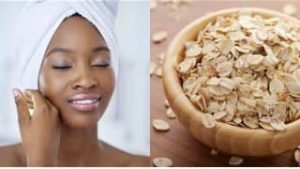Chemicals in Cosmetics - List of 60 Toxic Ingredients

Numerous cosmetics and personal care products on the market are produced with chemicals that pose a certain danger to the health of the consumer.
Nowhere but in the United States, it was reported that about 60,000 women suffer from the harmful effects of hazardous chemicals contained in some cosmetic products. Topical burns, rashes, allergies, hair loss and long-term carcinogenic effects are some of the events observed with the use of these non-natural products.
It is therefore important to ensure the quality of cosmetic products on the market. Here is a list of 60 harmful ingredients found in some hygiene products and commercial cosmetics.
Whenever you buy a beauty product, read carefully the label which specifies its content.
List of Toxic Chemicals in Cosmetics
Here is a list of hazardous substances, often found in cosmetic products on the market. This list is presented in alphabetical order of hygiene and cosmetics. We will briefly explain the harmful effects of chemicals on human health.
| Antibacterials | Some antibacterial personal care products contain dyes (the triarylmethane brilliant Blue (Blue 1) also called FCF or E133; brilliant green B5 or E142; tartrazine acid yellow or E102; sunset yellow FCF or E110; cocamide DEA or cocamide diethanolamine; quaternium-15 which can release formaldehyde (formalin); glycol ethers; mercury and lead; methyl, propyl, ethyl or butyl parabens; vaseline; paraphenylenediamine (PPD); phthalates and toluene. ► All these chemicals are toxic during prolonged use. Phthalates and parabens (absorbed through the skin and accumulated in the body ) promote breast cancer. Formaldehyde is a carcinogen. Petrolatum is mineral oil that can be stored in the body and unfortunately cannot be metabolized by the latter. It can damage the liver. |
|---|---|
| Antiperspirants | Some antiperspirants or deodorants contain aluminium (eg aluminium chlorohydrate ) sometimes an ingredient responsible for damage to nerves and terrible autoimmune diseases (including multiple sclerosis). The aluminium could be a risk factor for Alzheimer’s disease (Of course, additional research is needed to settle the controversy over the link between aluminium and Alzheimer’s disease). Aluminium chlorohydrate, which is easily stored in the lymph glands that lie beneath the arms, may also increase the risk of developing breast cancer in women. Some antiperspirants and deodorants contain parabens which can cause breast cancer. |
| Body Lotion | Creams and lotions for the body often contain mineral oil derived from petroleum (paraffin, petrolatum), which can be stored in the body and unfortunately can not be metabolized by the latter. It can damage the liver. |
| Eyeliner Eye Contour | Some eyeliners contain a molecule by the name of ascorbyl palmitate. This toxic ingredient is considered carcinogenic and mutagenic. |
| Eyeshadow | Some eyeshadows contain iron oxide, a suspected carcinogen and a teratogen. Nuremberg violet is toxic if inhaled ! |
| Hair Fixatives and hair lacquers | Some hair lacquers and hair fixatives contain polyvinylpyrrolidone PEG-40 (inhaled this chemical is harmful) and high toxic levels of dioxin and propylene glycol. These chemicals may cause liver and kidney problems. |
| Foundations | Some foundations contain propylene glycol, a neurotoxin and skin sensitizer. Propylene glycol can cause nausea, vomiting, headaches and liver abnormalities. Foundations in stick contain isopropyl myristate, a fatty compound that can cause the appearance of comedones. It is not uncommon for foundations to contain preservatives called parabens. Parabens are allergens that accumulate in the body and which may be responsible for hormonal changes. The parabens promote breast cancer. |
| Hair Coloring | Some hair dyes contain a synthetic solvent called diethanolamine or DEA. DEA can cause dermatitis and form carcinogens such as nitrosamines. This is a dangerous substance which is toxic to the liver, kidneys and pancreas. Formaldehyde (formalin), sometimes found in synthetic hair dye, is carcinogenic by inhalation. Some hair dyes also contain lead, a heavily carcinogenic metal. |
| Hairspray | According to comments reported in the newspaper The Daily Telegraph, in November 2008, scientists from London found that phthalates in certain hair sprays can have a dangerous effect on the health of the embryo of pregnant women during the 3 early months of pregnancy. There would be then not minimal risk of the child being born with a deformity in the penis with a voiding orifice (urinary) that is not in its place. |
| Lipstick | Various dyes and additives in most lipsticks contain toxic heavy metals. Lead in particular is harmful and carcinogenic metal that acts on the nervous system, kidneys, bones, heart and blood. Pregnant women are at greater risk. *** To find out if your lipstick contains lead, put a little lipstick on toilet paper and rub the stain with a gold ring. If the red becomes black, you will know that your beauty product contains lead! The lipstick also contains petroleum (benzopyrene , benzofluroanthene ) carcinogens. |
| Mascara | The mascara can be contaminated by bacteria. It also contains polyvinylpyrrolidone (PVP), a carcinogen. Phenylmercuric acetate , a preservative derived from benzene and mercury, is also frequently added to the composition of mascaras and can cause allergies and skin irritations. Yet another product containing relatively high concentrations of parabens (see above for toxicity) ! Pentaerythrityl is an additive resin made from formaldehyde (see above about the dangers of formaldehyde). Some mascaras also contain quaternium-22, a preservative that can cause contact allergies, and sodium polystyrene sulfonate, an irritant nonylphenol with an estrogenic action. |
| Mouthwashes | The ethanol in mouthwashes is suspected of causing cancer of the oesophagus, mouth and tongue. Phenol, meanwhile, is a highly toxic chemical agent. In some cases, this can cause cardiac depression and respiratory arrest. Phenol is also suspected of causing cancer in humans. |
| Moisturizers | Some moisturizers cosmetics contain phenolic acid (phenol), which can cause fainting, paralysis, convulsions, coma and can cause death due to respiratory failure. Other moisturizers contain polyethylenglycols PEG-40. PEG-40 is in fact a surfactant and an emulsifier made from ethylene oxide, a hypertoxic gas ! PEG-40 is a suspected carcinogen. |
| Perfume | Out of over 3000 chemicals used by the fragrance industry, 884 can cause cancer, birth defects, disorders of the central nervous system, skin irritation, eye irritation and allergic reactions. (SOURCE : National Institute of Health and Safety of the United States, NIOSH, 1989). Many perfumes contain a solvent called toluene, which is a toxic derivative of benzene. Toluene can cause headaches, nausea, and narcosis (pathological sleepiness). Some perfumes contain benzaldehyde, a depressant of the central nervous system which can cause kidney damage, and musk compounds which are carcinogenic artificial odorants. |
| Shampoo and Shower gels | SLS (Sodium laureth sulfate, or sodium lauryl sulfate ) found in many shampoos are carcinogenic, mutagenic and toxic. SLS can lead to cataract formation and then blindness, not only from contact with the eye, but by absorption through the skin over the long term. The alkylphenol ethoxylate found in shampoos reduce sperm production. Cocomidopropyl betaine is a synthetic agent used in shampoos in combination with other surfactants. Cocomidopropyl betaine is sometimes responsible for dermatitis on the eyelids. Shampoos may contain cocamide DEA (Diethanolamine) to promote the formation of foam. Cocamide DEA belongs to the family of nitrosamines which are carcinogenic. Synthetic cocamidopropyl betaine may cause dermatitis of the eyelid and is also considered as being a carcinogen. |
| Shaving cream | Some shaving creams contain pinene, a chemical that damages the immune system. |
| Soap | Conventional soaps have excellent cleaning power but have the drawback of having a pH of 9. They alter the hydrolipidic (fat) layer and dry out the skin. They may contain ammonia, formaldehyde, phenol, which are known to be carcinogenic, and triclocarban which is suspected to be carcinogenic when used daily. Triclosan is a highly reactive bactericide. In combination with water, triclosan can produce chloroform gas, which when inhaled, can cause liver problems, depression and cancer. |
| Sunscreen | Some creams, gels, lotions, sprays and sun fluids contain an allergen called oxybenzone (BP-3 or BZ-3) which cross the skin barrier and transform the solar energy absorbed into free radicals, causes of premature aging of the skin ! Chemicals to absolutely avoid when choosing sunscreens are padimate O, associated with the preservative BNPD. The combination of these two chemicals produces nitrosamine (NMPABAO), a carcinogen. The para-aminobenzoic acid (PABA) is a sunscreen known for its allergenicity. On the other hand, an excessive concentration of PABA stored in the body can damage the liver. A number of sunscreens contain preservatives such as butylparaben, which have an estrogenic effect. Frequent use of these synthetic sunscreens may promote the development of breast cancer in women and reduce sperm production in men. |
| Talc | Magnesium silicate is toxic by inhalation. In laboratory animals, it causes tumors. Talc is used in powders, deodorants and cosmetics. It is recognized as potentially carcinogenic and is strongly linked to cancer of the uterus and ovaries. |
| Toothpaste | Some toothpastes contain FD&C Blue # 1 (azo dye allergen), saccharin and resorcinol, chemical components that can cause blood disorder (methemoglobinemia), convulsions and even death. Prolonged usage of toothpastes and mouthwashes containing parabens could lead to gum disease and stains on the teeth. Dioform is found some toothpastes used to whiten the teeth. Dioform has the disadvantage of damaging the protective tooth enamel. |
List of main colorings, preservatives , antioxidants, emulsifiers and additives
Allergenics : E102, E105, E110, E120, E123, E124, E125, E126, E330, E331, E332, E333.
Carcinogens : E123, E142, E210, E211, E212, E213, E214, E215, E216, E217, E218, E236, E237, E238, E239.
Obstruct the binding of vitamin B : E220, E221, E222, E223, E224, E225, E226, E227.
To Avoid : E220, E221, E222, E223, E224, E225, E226, E227, E250, E251, E252, E270, E290, E311, E312, E320, E321, E338, E339, E340, E341. Ferrocyanure de sodium, Ferrocyanure de potassium, Manganitrile de fer.
Author : Alexis ROGER
Press The Rewind Button On Aging From the Inside-Out
Master a powerful, anti-aging Shiatsu routine that helps generate lymphatic circulation and gives you a natural facelift. (You won’t believe how easy it is to diminish that swelling around your eyes… or the puffy, blotchy complexion that drives you crazy.)
- Eliminate fine lines around the eyes and mouth.
- Tone sagging facial muscles.
- Firm facial contours.
- Soften deep wrinkles across the forehead, between the eyebrows.
- Reduce under eye and facial puffiness.
- Tighten large and uneven facial pores.
- Define cheeks, neck and jawline.
- Improve skin texture and color.
- Create a luminous and radiant glow.
Weight Loss Juice with Parsley
Brain Teaser
__________

